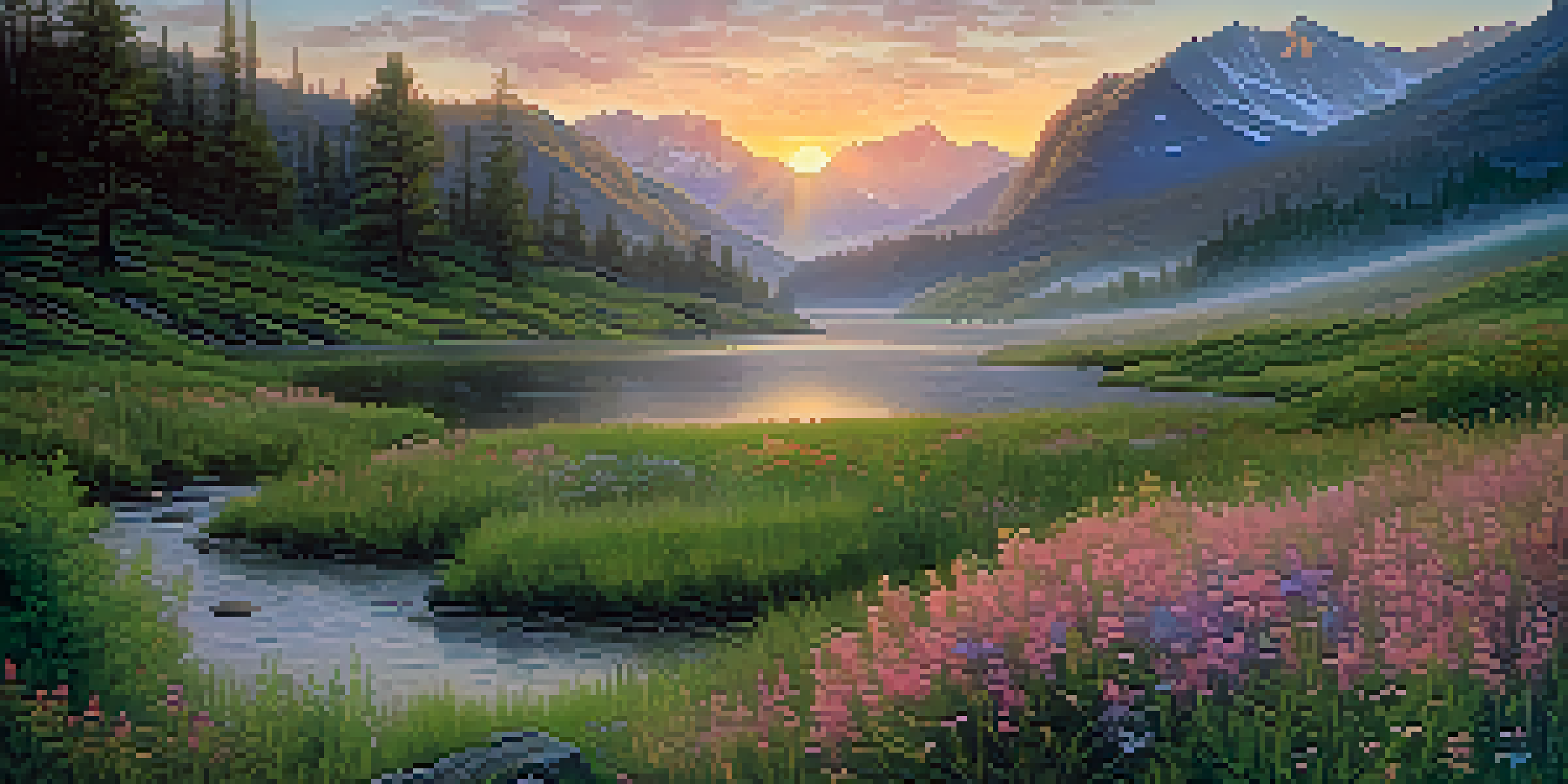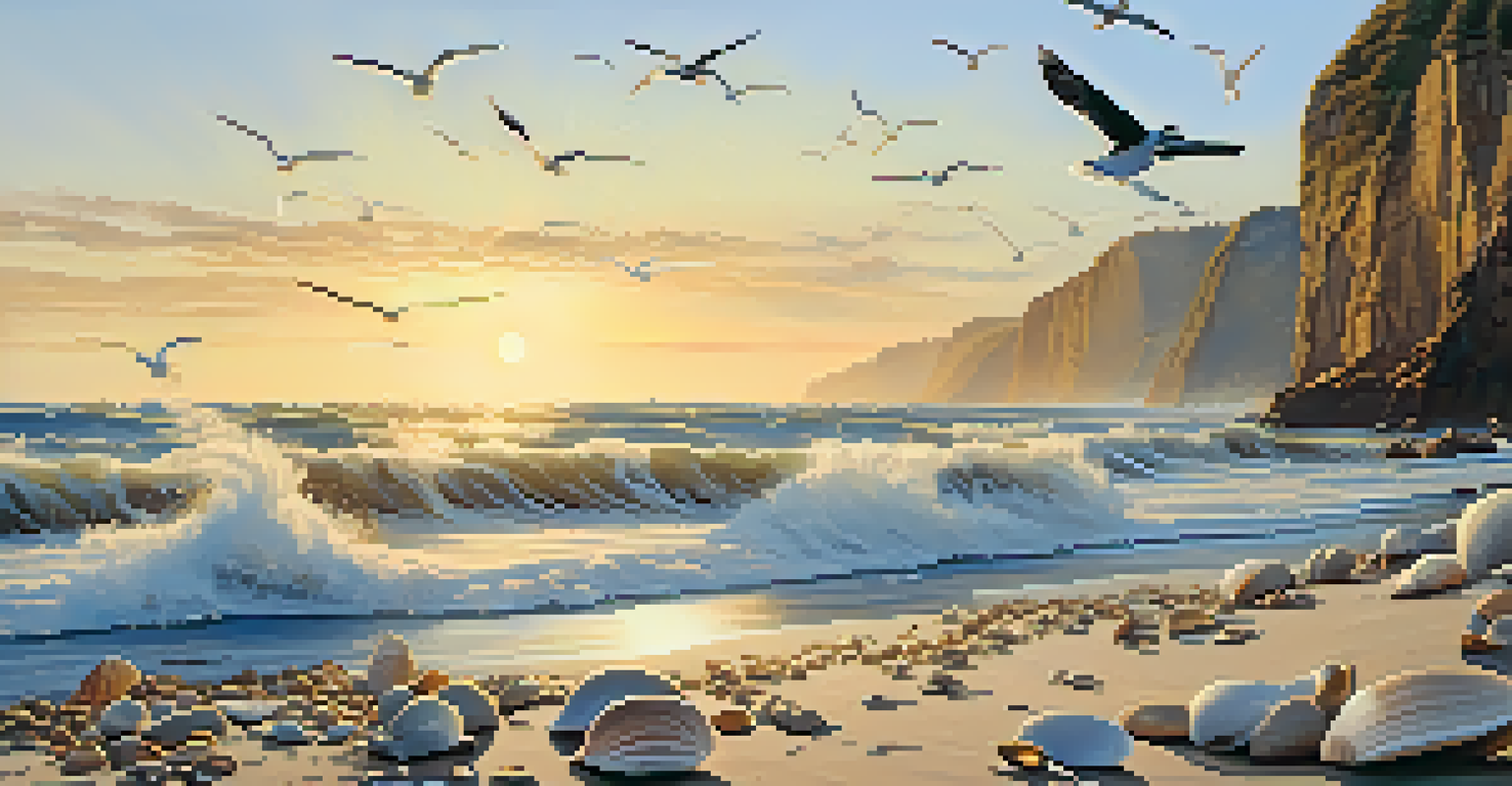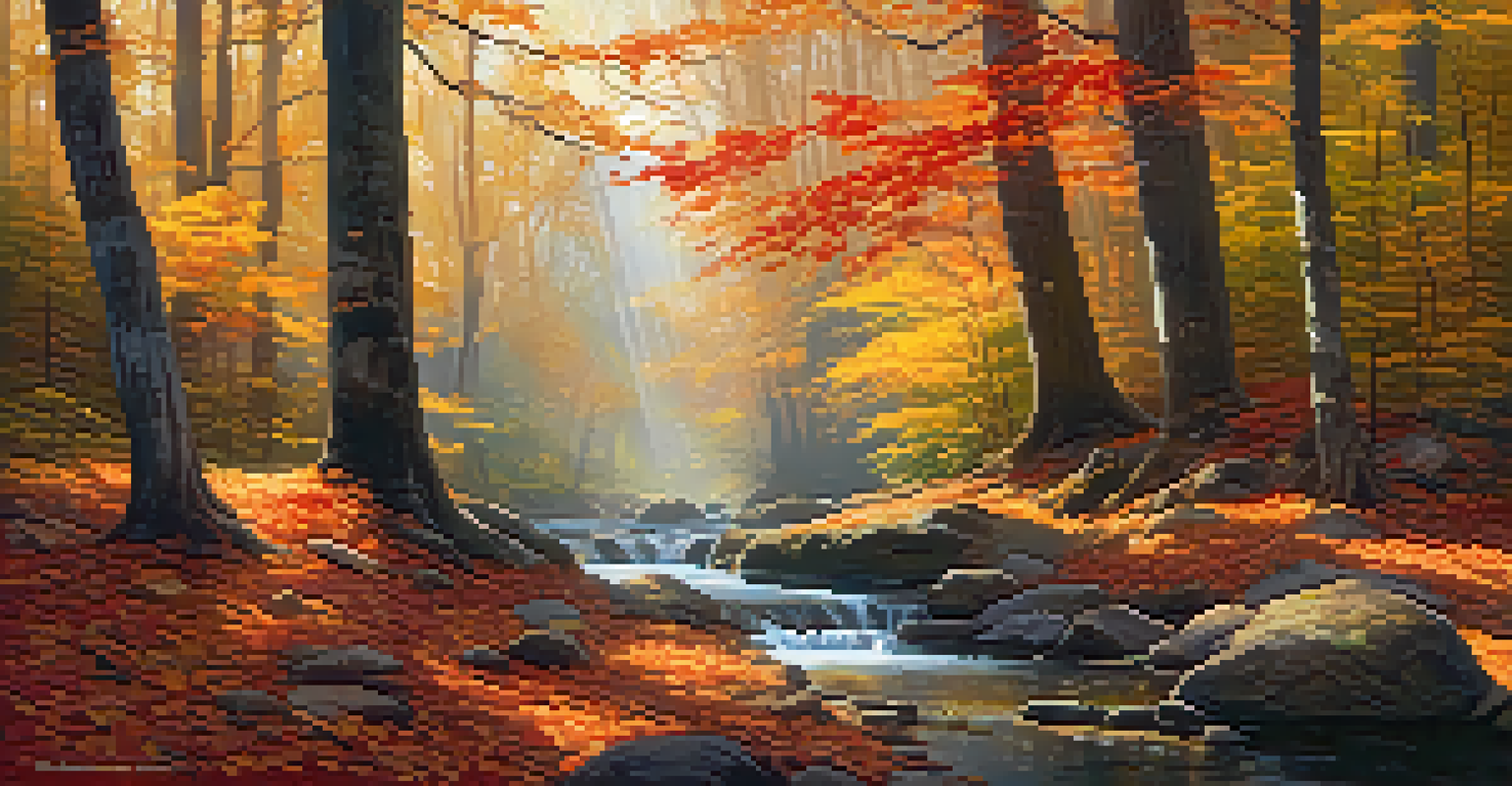Essential Gear for Capturing Stunning Landscape Photos

Camera: The Heart of Your Landscape Photography
Your camera is the cornerstone of landscape photography. Whether you opt for a DSLR, mirrorless, or even a compact camera, it's essential to choose one that suits your shooting style. A camera with manual settings allows you greater control over exposure, aperture, and shutter speed, all crucial for capturing breathtaking landscapes.
The camera is an instrument that teaches people how to see without a camera.
For landscapes, you'll want a camera with excellent dynamic range to capture details in both shadows and highlights. Look for models that excel in low-light conditions, especially if you plan to shoot during dawn or dusk when the light can be magical. Don't forget to invest in a good lens; a wide-angle lens is often preferred for capturing expansive scenes.
Ultimately, the best camera is one that you're comfortable using. Familiarity with your gear can make a significant difference, allowing you to focus on creativity rather than technical challenges. Keep in mind that while gear matters, your vision and ability to compose a shot are just as important.
Lenses: Choosing the Right Perspective
The lens you choose can dramatically influence the look of your landscape photos. Wide-angle lenses are ideal for capturing sweeping vistas and vast skies, while telephoto lenses allow you to zoom in on distant details, making them both valuable additions to your kit. A versatile zoom lens can also serve multiple purposes, making it a great all-around option.

Consider investing in a lens with a low f-stop number for better performance in low light and more control over depth of field. This feature helps you create beautiful, blurred backgrounds while keeping your main subject in sharp focus. Don't forget to look for lenses that are weather-sealed if you plan to shoot in challenging conditions.
Choose the Right Camera
Selecting a camera that suits your shooting style and offers manual settings is crucial for capturing breathtaking landscapes.
Ultimately, the right lens will not only enhance your ability to capture stunning landscapes but also shape your creative vision. Experimenting with different lenses can lead to unique perspectives, so don’t hesitate to switch things up as you explore.
Tripods: Stability for Sharp Images
A sturdy tripod is an essential piece of equipment for any landscape photographer. It provides stability, particularly in low-light situations or when using slower shutter speeds, ensuring that your images are sharp and free from camera shake. Consider lightweight materials like carbon fiber if you're hiking to your shooting locations.
Photography is the story I fail to put into words.
Look for a tripod that offers adjustable height and a ball head for flexible positioning. Some tripods also come with features like quick-release plates, making it easy to switch between shooting modes. Remember, a good tripod can also help you experiment with long exposures, capturing the movement of clouds or water beautifully.
In addition to stability, a tripod can also encourage you to take your time with composition. With the camera securely mounted, you can focus on framing your shot, adjusting settings, and waiting for the perfect light, ultimately resulting in more thoughtful and stunning images.
Filters: Enhancing Colors and Contrast
Filters are powerful tools that can elevate your landscape photography by enhancing colors and contrast. A polarizing filter, for example, can reduce reflections and increase the saturation of the sky, making those fluffy white clouds pop against a deep blue backdrop. This can significantly improve the overall impact of your images.
Neutral density (ND) filters are another fantastic option, allowing you to reduce the amount of light entering the lens. This is particularly useful for capturing long exposure shots of waterfalls or oceans, where you want to create that dreamy, smooth effect. With ND filters, you can maintain a lower ISO and wider aperture for better image quality.
Invest in Quality Lenses
The right lens can dramatically shape your landscape photography, allowing for creative perspectives and improved image quality.
Experimenting with filters can lead to stunning results, transforming ordinary scenes into extraordinary ones. Just be sure to invest in high-quality filters to avoid any unwanted color casts or distortion in your images.
Remote Shutter Release: Perfect Timing
A remote shutter release is a small yet mighty tool that every landscape photographer should consider. This device allows you to take photos without touching the camera, minimizing the risk of camera shake that can occur when pressing the shutter button. This is particularly important for long exposure shots and macro photography.
Many cameras now come with wireless options, allowing you to trigger your shutter from a distance. This can be especially handy for capturing wildlife in landscape settings or when you're trying to include yourself in the shot. Plus, using a remote can help you experiment with different compositions without having to constantly adjust your position.
Investing in a remote shutter release can open up new creative possibilities and help you achieve sharper images. It’s a simple addition that can make a significant difference in the quality of your landscape photography.
Extra Batteries: Never Miss a Moment
When you're out capturing landscapes, the last thing you want is for your camera battery to die. Landscape photography often involves long hikes or hours spent in one location, making extra batteries a crucial part of your gear. Always have at least one spare charged battery on hand, especially if you plan to shoot at sunrise or sunset.
Cold weather can also affect battery life, causing them to drain faster than usual. If you're shooting in chilly conditions, consider keeping your batteries warm in your pocket until you're ready to use them. This simple trick can help extend their life and ensure you don’t miss that perfect shot.
Editing Enhances Your Photos
Using editing software can elevate your landscape images by adjusting exposure, contrast, and color balance to bring your vision to life.
Being prepared with extra batteries allows you to focus on your photography instead of worrying about running out of power. It ensures you’re ready to capture stunning landscapes whenever inspiration strikes.
Editing Software: The Final Touch
Once you've captured your stunning landscape photos, the next step is to bring them to life with editing software. Programs like Adobe Lightroom or Photoshop offer powerful tools to enhance your images, allowing you to adjust exposure, contrast, and color balance. This is where you can really make your photos shine.
Even if you prefer a more natural look, basic adjustments can help correct minor issues and elevate your work. Cropping can improve composition, while sharpening can enhance details, giving your landscapes that professional touch. Don’t shy away from experimentation; sometimes, a little creativity in editing can lead to breathtaking results.

Investing time in learning editing techniques can be just as important as mastering your camera. With the right software and skills, you can transform your captures into stunning visual stories that truly reflect the beauty of the landscapes you photographed.